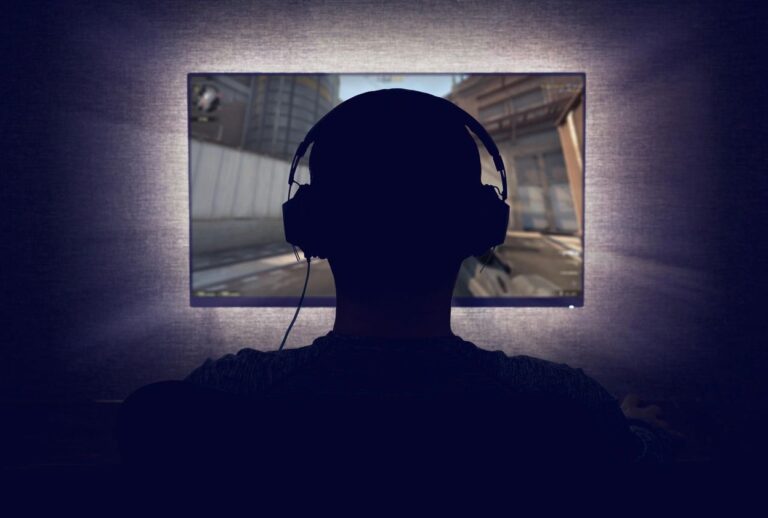Gaming monitors have become an essential component in every gamer’s arsenal. If you want to get the most out of your gaming experience, you need a monitor that can keep up with the high demands of modern games. But with so many options available on the market, it can be challenging to choose the right one for your needs.
A good gaming monitor enhances your overall visual experience while playing games by providing you with higher resolution, faster refresh rates, and better color accuracy than traditional monitors. With a gaming monitor, you can see more details in your games and enjoy smoother motion without any lag or tearing.
Moreover, professional gamers understand that having a quality monitor is crucial for competitive gameplay as even the slightest delay in visual feedback can be the difference between winning or losing. A top-tier gaming monitor not only improves your visual experience but also gives you a significant advantage over your opponents.
Brief Overview of What to Expect in this Guide
This guide aims to help you choose the best gaming monitor for your needs by providing an understanding of important specifications such as resolution and aspect ratio, refresh rate and response time, panel types such as TN, IPS and VA and G-Sync and FreeSync technology. We will also explore how to select the right size monitoring based on viewing distance and personal preferences before delving into budget considerations such as price ranges for gaming monitors vs value analysis. Additionally, this guide will take an in-depth look at specific features like HDR support, color accuracy/gamut coverage, adjustable stand options that are must-haves for gamers looking to enhance their overall gaming experience.
Niche subtopics like ultrawide monitors for immersive gameplay or curved monitors for enhanced viewing angles will also be explored before discussing lesser-known details about input lag versus response time explained and flicker-free technology benefits. This comprehensive guide will provide gamers with all the information they need to make an informed decision when choosing their next gaming monitor.
Understanding Monitor Specifications
Resolution and Aspect Ratio
One of the most important specifications to consider when buying a gaming monitor is the resolution. Resolution describes the number of pixels on a screen, and the more pixels there are, the sharper and more detailed images will appear.
1080p (1920×1080) is currently the most common resolution for gaming monitors, but higher resolutions such as 1440p (2560×1440) or even 4K (3840×2160) are becoming increasingly popular. Aspect ratio is another important factor to consider.
Most gaming monitors have an aspect ratio of 16:9, which means that for every 16 units of width there are 9 units of height. However, ultrawide monitors with aspect ratios such as 21:9 or 32:9 provide a wider field-of-view and can offer a more immersive gaming experience.
Refresh Rate and Response Time
Refresh rate refers to how many times per second a monitor updates its image. The standard refresh rate for most monitors is 60Hz, but higher refresh rates such as 120Hz or even up to 240Hz can provide smoother motion and reduce motion blur in fast-paced games. Response time refers to how quickly each pixel on a screen changes from one color to another.
A lower response time means that images will appear less blurry during fast-paced action scenes in games. A response time of around 1ms is ideal for gaming.
Panel Types (TN, IPS, VA)
The panel type determines how colors are displayed on the screen and affects viewing angles and contrast levels. TN panels have fast response times and low input lag which makes them ideal for competitive gamers who need quick reflexes in games like first-person shooters.
However they have poor viewing angles and color accuracy. IPS panels have better color accuracy and wider viewing angles than TN panels but have slower response times and may suffer from backlight bleed and other uniformity issues.
VA panels provide the best contrast ratio of the three panel types, which means that they can display darker blacks and brighter whites. However, they have slower response times, lower refresh rates, and can suffer from ghosting during fast-paced action scenes.
G-Sync and FreeSync
G-Sync is a technology developed by Nvidia that synchronizes the refresh rate of a monitor with the frame rate of an Nvidia graphics card to eliminate screen tearing, stuttering, and input lag. FreeSync is AMD’s equivalent technology for AMD graphics cards.
Both technologies are designed to provide a smoother gaming experience by reducing visual artifacts that can occur when the monitor’s refresh rate does not match the frame rate produced by the graphics card. It’s important to note that G-Sync requires an Nvidia graphics card while FreeSync requires an AMD graphics card to function properly.
Choosing the Right Size Monitor for Your Setup
Now that you understand the technical specifications, it’s time to consider what size monitor will be best for your gaming setup. There are a few things to take into account when choosing a monitor size, including desk space considerations, viewing distance, and personal preference.
Desk Space Considerations
The first thing you need to consider is how much space you have on your desk. A larger monitor might not fit well on a small desk, while a smaller monitor may look lost on a larger one.
Measure your desk and ensure that you have enough room for the monitor size that you are considering. If you’re working with limited space or have multiple monitors to fit onto one desk, consider an ultra-wide screen or stacking monitors vertically.
Multiple monitors can be great for multitasking but can also lead to neck strain from constantly turning your head. An ultra-wide screen can give you more screen real estate without taking up too much physical space.
Viewing Distance
The next consideration is how far away from the monitor you’ll be sitting. The sweet spot for most gamers is around two feet away from their screen but this can vary depending on personal preference or room layout. This distance should determine what sized monitor would work best for your setup.
If your viewing distance is farther than two feet away from the screen, then it’s recommended to go with a larger display size (27 inches or above). If your viewing distance is closer than two feet away from the screen then go with 24 inches or smaller as it will help with eye strain issues.
Personal Preference
The final consideration is personal preference which plays an important role in choosing the right-size gaming monitor. Whether someone prefers playing games in their living room or a dedicated gaming room, the size of the monitor will vary based on personal preference. Some gamers prefer 24-inch monitors for competitive gaming while others prefer larger displays for immersive gameplay.
Ultimately, it comes down to what feels comfortable and what fits your setup the best. So take into account desk space considerations and viewing distance but also think about your personal preferences before finalizing your decision on monitor size.
Budget Considerations and Specific Features to Look For in a Gaming Monitor
When it comes to purchasing a gaming monitor, budget is often a crucial consideration. Gaming monitors range in price from as low as $100 to well over $1,000, so it’s important to consider both your budget and the specific features that you’re looking for. Keep in mind that not all expensive monitors are worth their price tag, and some budget-friendly options can be just as good.
To start with, you should determine which features are most important to you and your gaming setup. As mentioned earlier, HDR support is becoming increasingly desirable among gamers due to its ability to enhance the overall visual quality of games.
Color accuracy and gamut coverage are also important factors that will affect the realism of colors on your screen. Adjustable stand options can help ensure your monitor is at a comfortable viewing angle for extended play sessions.
Before making a purchase decision based on these features alone, it’s important to weigh the cost of each feature against its value for you personally. It might be worth spending more money on certain features if they significantly enhance your gameplay experience, but other times it’s better to opt for a more affordable option.
Ultrawide Monitors and Curved Monitors
While traditional monitor sizes have always been popular among gamers, ultrawide monitors have recently gained popularity due to their ability to provide an immersive gaming experience with wider views of gameplay environments. Ultrawide monitors vary in size from 29 inches up to 49 inches with resolutions ranging from 1080p up through 4K. Another niche option that has grown in popularity lately is curved monitors.
These screens come with varying degrees of curvature and are designed specifically for enhanced viewing angles while gaming or watching movies. The curved screens offer improved immersion by reducing eye strain over time by more naturally aligning with the shape of your eyes.
Again, when considering these niche subtopics, it’s critical to weigh the cost of each option against its value for your gaming needs. If you’re on a tight budget, they might not be worth the extra money, but if you’re looking for a more immersive experience or need an extra edge in competitive games, ultrawide or curved monitors could be worth the investment.
Lesser Known Details About Gaming Monitors
When choosing a gaming monitor, there are some lesser-known details that can make all the difference in your overall experience. Input lag and response time are two such factors.
Input lag refers to the delay between pressing a button on your controller and seeing it happen on screen. Response time is how quickly individual pixels change colors; it’s measured in milliseconds (ms).
A lower response time means less blurring and trailing during fast-paced gameplay. Another factor to consider is flicker-free technology.
Some gamers suffer from headaches or eyestrain after prolonged sessions playing on monitors that flicker or have poor brightness consistency. Flicker-free technology helps reduce these issues by stabilizing brightness levels across all areas of the screen.
Conclusion
Choosing a gaming monitor requires careful consideration of several important factors such as resolution, aspect ratio, refresh rate, panel types like TN vs IPS vs VA etc., HDR support and color accuracy/gamut coverage among others. It’s also important to weigh budget constraints against feature needs before making any purchase decisions because finding the right balance between cost-effectiveness and performance can be challenging but ultimately rewarding if done right!




